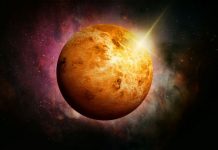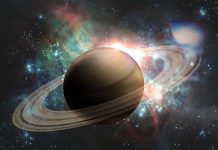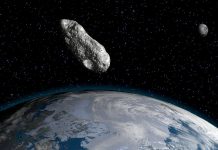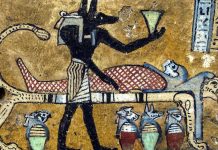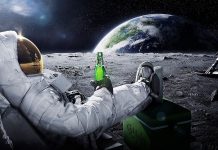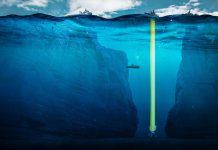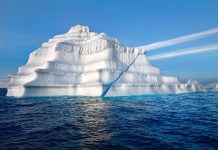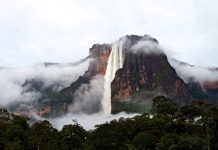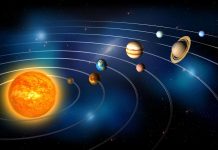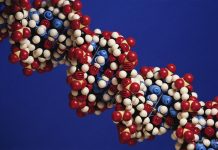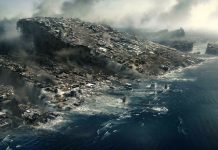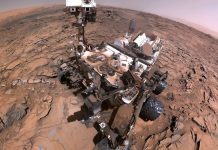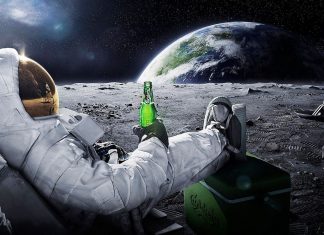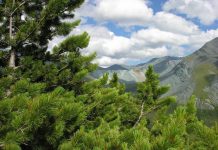For the first time ever, an Earth-based telescope has captured images of a small moon orbiting an asteroid.
Using the 12-foot (3.6-meter) Canada-France-Hawaii Telescope on Hawaii’s Mauna Kea volcano, astronomers have discovered and photographed a satellite circling the asteroid Eugenia.
Some 133 miles (215 kilometers) in diameter, the oblong Eugenia is among the 25 largest bodies in the asteroid belt between Mars and Jupiter. Its moon is just 8 miles (13 kilometers) across, and orbits its spinning parent once every four and a half days at a distance of 745 miles (1,200 kilometers) from Eugenia, its discoverers say.
The discovery of an orbiting satellite around Eugenia marks only the second instance an asteroid-moon pair has been confirmed. In 1993, the Galileo spacecraft returned pictures showing that asteroid Ida had a tiny partner. That satellite was subsequently named Dactyl.
The latest find, which is announced in this week’s issue of the journal Nature, has allowed scientists to determine the asteroid’s density – a crucial step in the quest to learn just what material makes up asteroids. An asteroid’s density has been established only in a few select cases when spacecraft have made a close asteroid flyby, or when an orbiting moon has been found.
The discovery is being hailed not only for what it promises to reveal about the nature of asteroids and solar system processes, but also as a significant validation of the burgeoning field of adaptive optics.
“From the ground, I think we probably couldn’t have seen it without adaptive optics,” said William Merline, an astronomer at the Southwest Research Center in Boulder, Colo. who leads the team of astronomers that made the discovery.
Adaptive systems strive to correct ground-based astronomy’s major shortcoming: the distortion caused by Earth’s turbulent atmosphere. The Canada-France-Hawaii Telescope uses a correction mechanism that allows it to achieve a visual crispness that has, until recently, been impossible to get from ground-based scopes.
Without adaptive optics, a body as small as Eugenia is seen only as blurry blob moving through the sky. Its edges appear so fuzzy that it is impossible to see any small satellite that might be in orbit around it.
The corrective systems overcome those limitations, however, and give astronomers the ability to observe objects that have previously been visible only through the Hubble Space Telescope.
So successful was the adaptive system on the Canada-France-Hawaii Telescope that, on the first night of observations last November, Merline noticed a miniscule point of light orbiting the tiny Eugenia. The international team had just begun a sky survey to search for satellites orbiting asteroids, and found one almost immediately.
The team imaged 25 asteroids, but did not immediately identify moons around any of the other bodies. Further data analysis could change that, however, Merline said.
Based on the characteristics of its moon’s orbit, Eugenia is only 20 percent more dense than water. The density measurement opens a mystery, Merline said, because most rocky material is about three times denser than water.
Asteroids are commonly thought to be composed of rock, so it is not known why Eugenia has such a low overall density, but two explanations for the asteroid’s levity seem plausible, he said. One idea suggests that the asteroid could be the nucleus of an inactive comet.
“It’s possible that it may be mostly water. A burned-out comet, for example, may have a density close to that [of Eugenia].”
The only problem with that idea, Merline said, is that active comets have very different orbits than asteroids. It is not clear how a comet nucleus would end up in an orbit so different from that of active comets, he said.
The other idea is that the asteroid is a pile of loosely jumbled fragments of porous rock. The trouble with this idea, Merline said, is that such a pile would need to have a lot of empty space in it to be of such low overall density.
Dan Britt, a planetary geologist at the University of Tennessee at Knoxville, suggests that Eugenia would have to be composed of about 47 percent empty space to explain its density.
Britt studies asteroids and is a member of the science team for the Deep Space 1 probe, which recently flew past asteroid Braille. “Eugenia is very under-dense and is probably a rubble pile held together by loose self-gravitation,” he said.
If Eugenia were composed of ice, it would need to be almost 85 percent ice, Britt said, and he has doubts that an asteroid could have so much water.
This question will undoubtedly become the focus of much of the attention concerning asteroids, but definitive answers will likely have to wait for more asteroid moons to be detected.
That may not be too far away, though. Britt called the ability of Merline and his colleagues to detect and track an asteroid satellite “thrilling.” He predicted that the technique would lead to a number of additional discoveries over time.
Merline said that would become the focus of a great deal of effort. “If we can find more examples, we can begin to learn how they formed,” he said.
More of the mystery may be unwrapped next February, when the Near Earth Asteroid Rendezvous (NEAR) spacecraft is scheduled to enter orbit around asteroid 433 Eros.
“We’re actually going to learn a lot more about what the rocks are made of — on the surface, at least,” Merline said, “and we could possibly learn from that mission whether we think Eros is a solid body or a rubble pile.”


